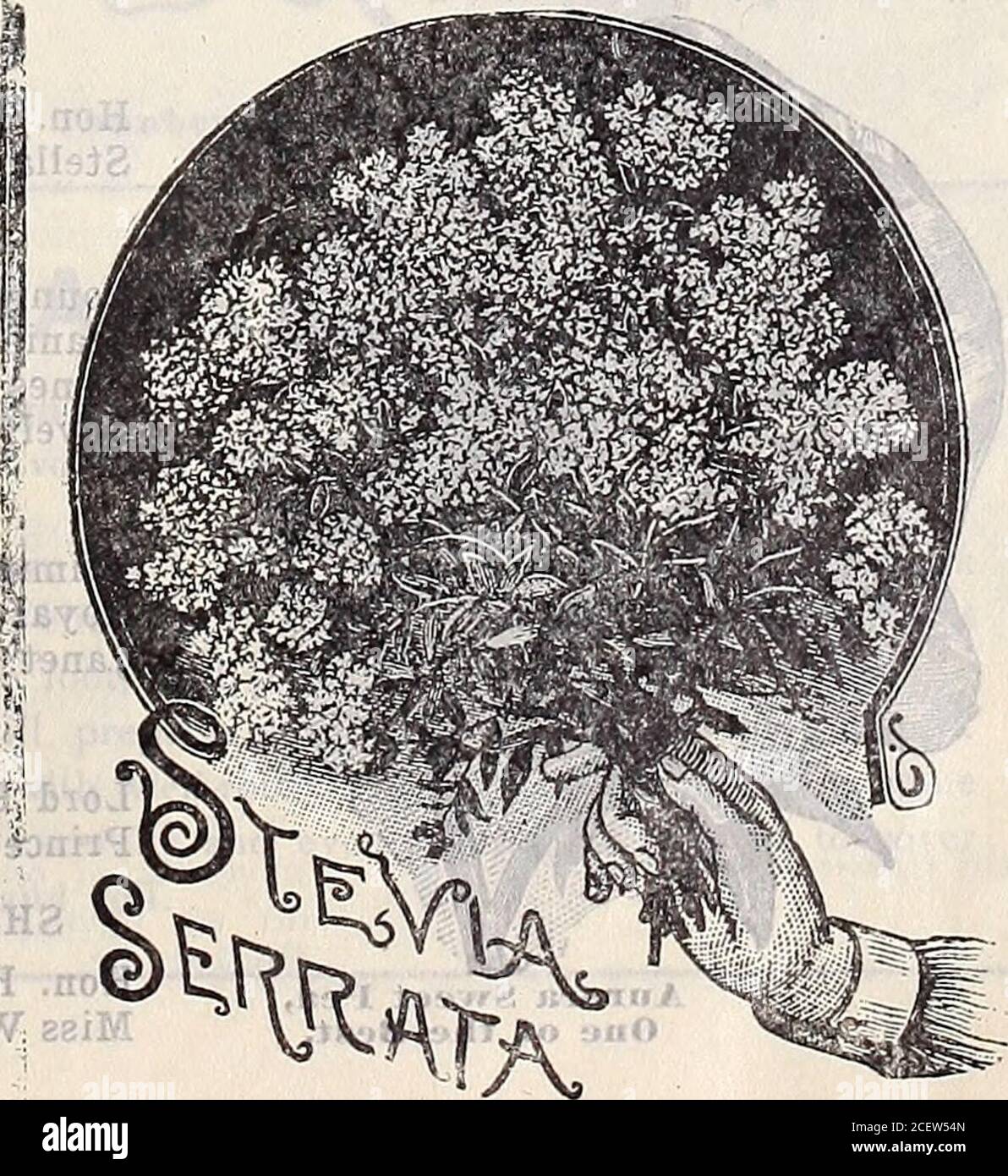. 1906 annual catalogue / Otto Schwill & Co. Pheasants Eye Pink. Double Diadem Pink.. 20 1906—DESCRIPTIVE CATALOGUE OF SEEDS, TREES AND PLANTS—1906 SWEET PEAS. A Few Rules for the Successful Cultivation of Sweet Peas. The plants should not be raised for two successive seasons on the same ground. Sweet Peas should not be planted on the same ground after culinary peas. Excessive manuring with stable manure in the row immediately before sowing theseed is not desirable. Ground intended for Sweet Peas, if not left in good conditionafter taking the last crop, will be better for manuring the previous

Image details
Contributor:
Reading Room 2020 / Alamy Stock PhotoImage ID:
2CEW54NFile size:
7.1 MB (539.7 KB Compressed download)Releases:
Model - no | Property - noDo I need a release?Dimensions:
1514 x 1650 px | 25.6 x 27.9 cm | 10.1 x 11 inches | 150dpiMore information:
This image is a public domain image, which means either that copyright has expired in the image or the copyright holder has waived their copyright. Alamy charges you a fee for access to the high resolution copy of the image.
This image could have imperfections as it’s either historical or reportage.
. 1906 annual catalogue / Otto Schwill & Co. Pheasants Eye Pink. Double Diadem Pink.. 20 1906—DESCRIPTIVE CATALOGUE OF SEEDS, TREES AND PLANTS—1906 SWEET PEAS. A Few Rules for the Successful Cultivation of Sweet Peas. The plants should not be raised for two successive seasons on the same ground. Sweet Peas should not be planted on the same ground after culinary peas. Excessive manuring with stable manure in the row immediately before sowing theseed is not desirable. Ground intended for Sweet Peas, if not left in good conditionafter taking the last crop, will be better for manuring the previous fall ratherthan at the spring seeding. The use of artificial fertilizers, bone meal, nitrate of soda, etc., can be made in thespring at the time of planting or soon after. Thin sowing, by which is meant planting the seeds from 4 to 6 inches apart, is con-ducive to vigor and strength of the plants, which come later into bloom, but con-tinue much longer than the plants from thick seeding. Frequent stirring of the soil with hoe or cultivator in dry weather, thus producinga dust